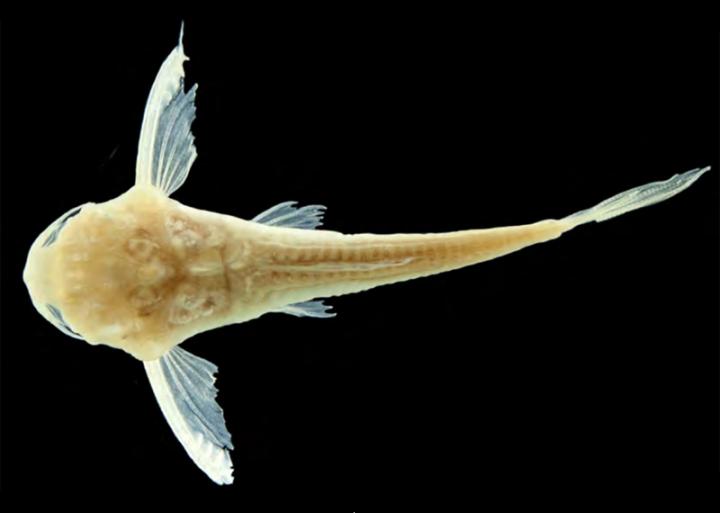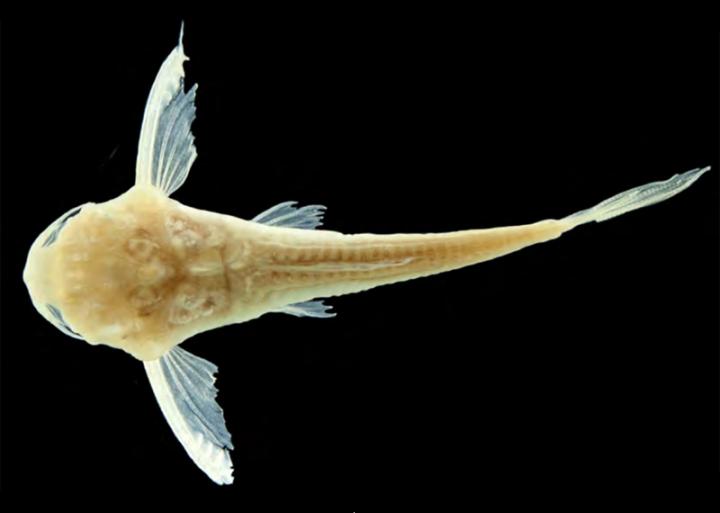
Credit: Courtesy of the Academy of Natural Sciences of Drexel University.
After almost four decades, an elusive, eyeless catfish measuring less than an inch now has a name and a detailed description, thanks to two scientists from the Academy of Natural Sciences of Drexel University: Micromyzon orinoco.
Two specimens of the catfish were caught in its namesake river, the Orinoco, near Ciudad Guyana in Venezuela during the US-Venezuelan Orinoco Delta Expeditions of 1978-79. But this isn't Pokemon: You don't suddenly identify a new animal once it's in hand — even if you already have a pretty good idea what it is.
"We knew what these fish were upon capture," said John Lundberg, PhD, emeritus professor in Drexel's College of Arts and Sciences and emeritus curator of the Academy, who was a part of the expedition. "But the devil is in the details."
Careful examination and comparison of existing species must be done to properly identify a new animal species, and that's something that can take some time. Being that there are only two known specimens collected, both held in the Ichthyology Collection of the Academy, there wasn't going to be much outside help coming to Lundberg or the lead author of the paper identifying M. orinoco, Tiago Carvalho, an Academy researcher who is also a faculty member at the Federal University of Rio Grande do Sul. Carvalho and Lundberg were able to describe the fish with help from ichthyological collaborators based in California, Alabama and Brazil
One of the main reasons why there are only two specimens of the catfish is its miniature size and preferred habitat.
First, the M. orinoco doesn't even measure an inch long. The larger specimen was about 15.6 millimeters long, the smaller measures just under 15. At that size, the nets used to trawl for aquatic specimens most often are not meshed thinly enough to trap them.
Second, these fish live at the remote bottom of South America's deep, big rivers. That's an environment that makes finding any kind of life difficult, whether that specimen is big or small.
"There is no way to encounter these fish other than by trawling with fine, mesh netting," Lundberg explained. "They are out of reach in lightless, swift-flowing river channels — where current speeds approach two meters per second — although speeds are a little slower right at the bottom. They probably bury themselves in sand much of the time."
Living in these dark waters, the M. orinoco, which belong to the family Aspredinidae (banjo catfishes), are uniquely developed for their environment. Almost pigmentless, they also don't have eyes.
"Two ideas float about," Lundberg explained. "First, true eyes are expensive to make and maintain, in terms of energy. And these animals are not in a highly productive habitat with unlimited food resources."
"Second, eyes without eyelids are potentially a liability in a world of shifting sand where there is no light anyway," he finished.
Although it took some time for the fish to get their name, the formal (or official) taxonomic description of M. orinoco is important not only for adding their species to the book of life on Earth, but in that they help establish the guidelines for identifying catfishes in their genus, especially since M. orinoco is only the second known species of Micromyzon. The first, named M. akamai by Lundberg and collaborator John Friel, was discovered in 1993 in the deep channels of the Amazon river in Brazil.
"This closely related species pair provides an important example, among others, of the evolutionary and biotic link between fishes inhabiting the largest rivers in South America," Lundberg explained.
###
Media Contact
Frank Otto
[email protected]
215-571-4244
@DrexelNews
http://www.Drexel.edu/
############
Story Source: Materials provided by Scienmag





